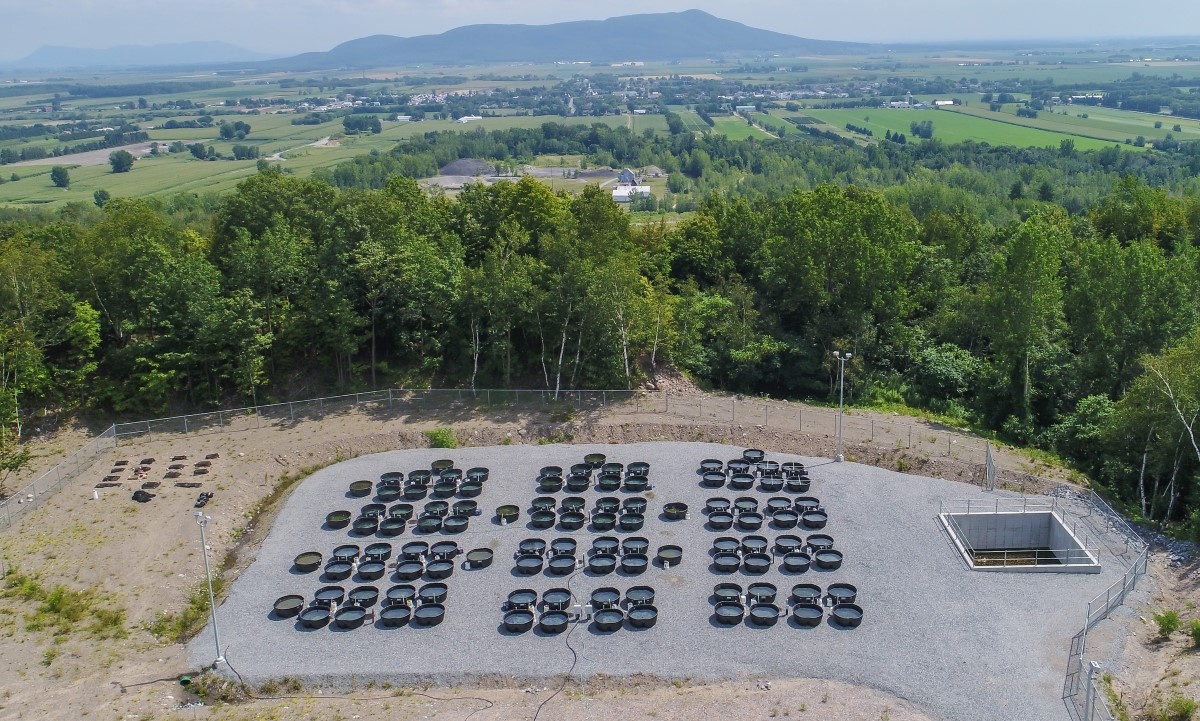05
Mar
Glyphosate Causes Biodiversity Loss in Freshwater Ecosystems, According to Study

Experimental ponds in Gault Nature Reserve. Photo credit: Vincent Fugère
(Beyond Pesticides, March 5, 2020) A new study conducted by researchers at McGill University investigated phytoplankton (microscopic algae) response and resilience to Roundup exposure. “Community rescue in experimental phytoplankton communities facing severe herbicide pollution” was published in Nature Ecology & Evolution. Researchers found that algae can develop resistance to contamination, but surviving phytoplankton communities are much less diverse. Diversity loss is cause for concern as it could hinder adaptation to other potential stressors, such as climate change.
Using experimental ponds, researchers first exposed some phytoplankton communities to low levels of Roundup over time, then dosed the ponds with a lethal amount. Groups that had been given low doses survived the lethal phase whereas unpolluted, control ponds did not. Researchers observed “community rescue,” where genetic changes avert population collapse in a lethal environment. In fact, glyphosate eventually became a fertilizer in resistant ponds as it is a significant source of phosphorus. Other studies, too, have noted that phosphorous loading is an overlooked impact of glyphosate contamination.
Phytoplankton matter because their disruption can cause a trophic cascade and impact other organisms. “These tiny species at the bottom of the food chain play an important role in the balance of a lake’s ecosystem and are a key source of food for microscopic animals,” says researcher and author Vincent Fugère, Ph.D., “Our experiments allow us to observe, in real time, how algae can acquire resistance to glyphosate in freshwater ecosystems.”
The resulting damage to genetic diversity causes concern. Andrew Gonzalez, Ph.D., says, “We observed significant loss of biodiversity in communities contaminated with glyphosate. This could have a profound impact on the proper functioning of ecosystems and lower the chance that they can adapt to new pollutants or stressors. This is particularly concerning as many ecosystems are grappling with the increasing threat of pollution and climate change.”
Glyphosate contamination is troubling for both environmental and human health impacts. While the U.S. Environmental Protection Agency (EPA) gives glyphosate the greenlight, Bayer, its major manufacturer, is mired in class-action cancer lawsuits, and currently in settlement talks rumored to reach over $10 billion. Its pervasive use and biocidal effects also links the chemical to broader health issues, such as antibiotic resistance.
As we face global threats exacerbated by toxic pesticide use — such as the sixth mass extinction, antibiotic resistance, and other public health crises — advocates say it is high time to abandon the toxic chemical treadmill and opt instead for practices that build biodiversity rather than destroy it. Organic agriculture saves local waterways from deadly contamination and offers a whole host of benefits such as climate resilience, economic security, and health equity. Help drive demand for this transition by purchasing organic whenever possible. Read more about the benefits of organic agriculture on Beyond Pesticides’ Why Organic program page.
All unattributed positions and opinions in this piece are those of Beyond Pesticides.
Source: McGill, Nature Ecology and Evolution










